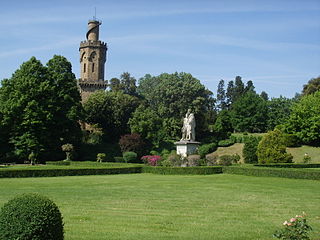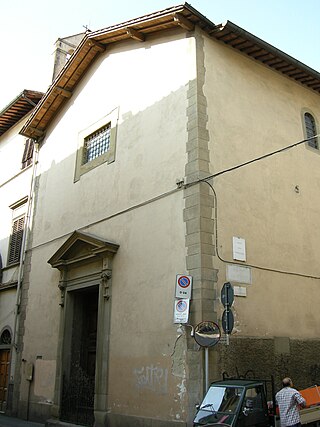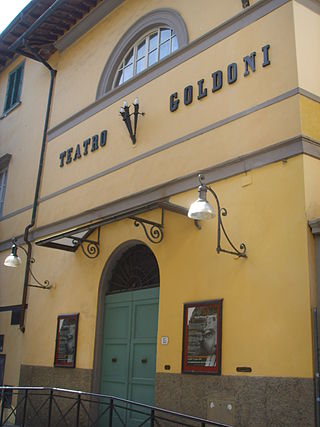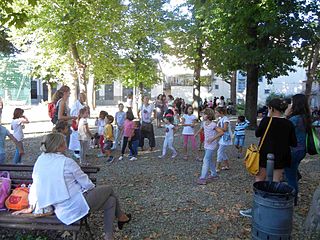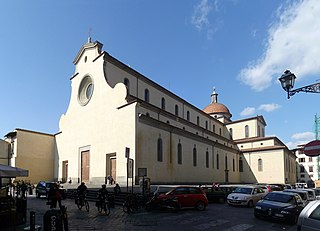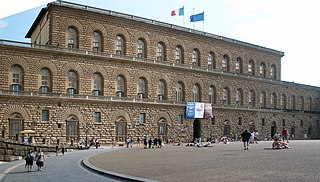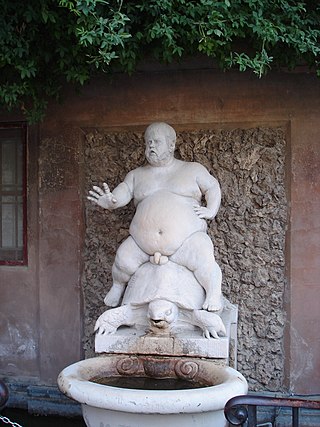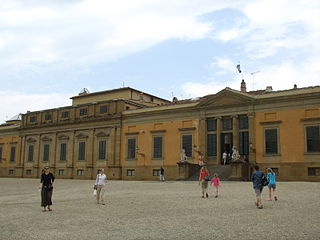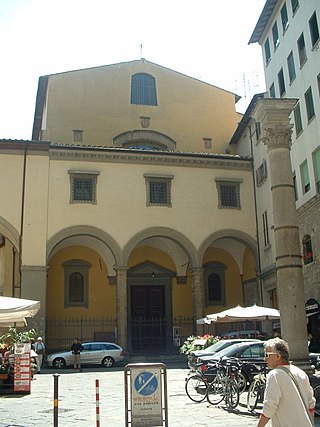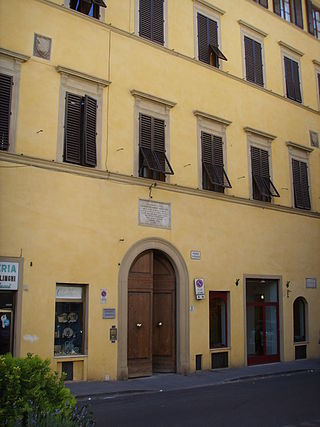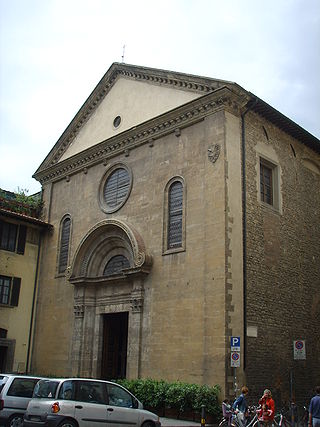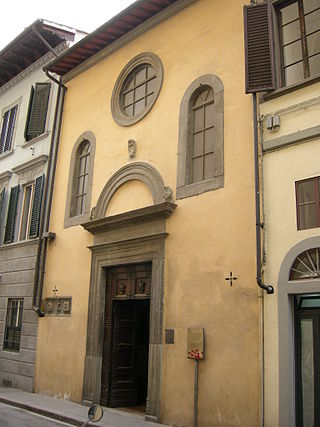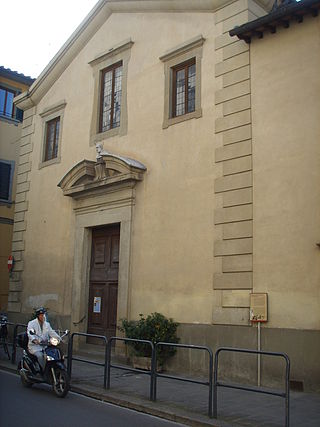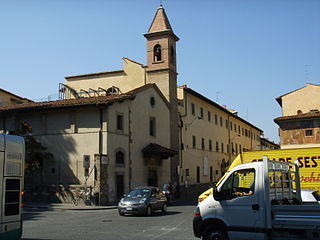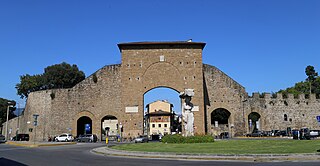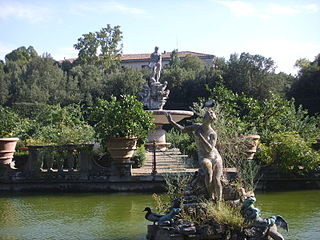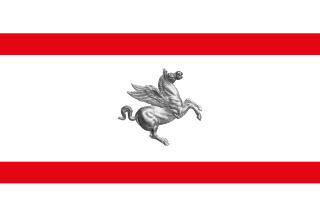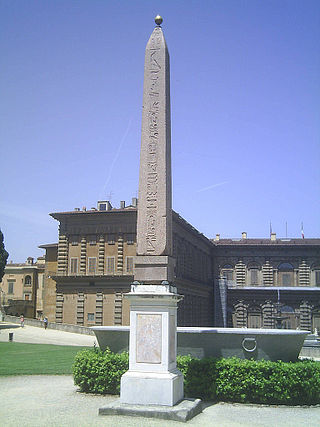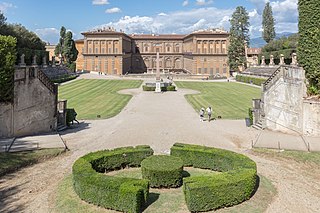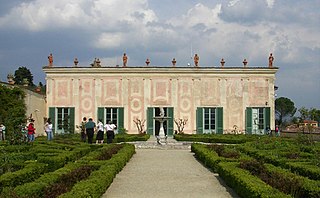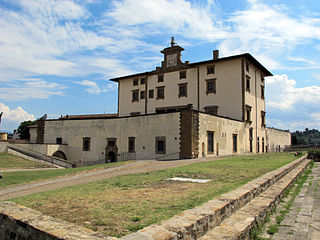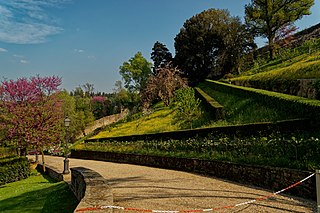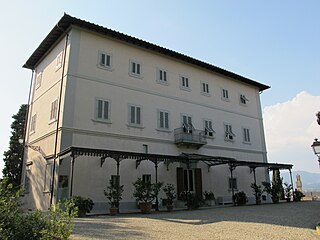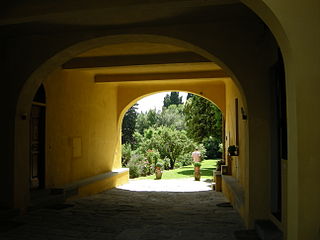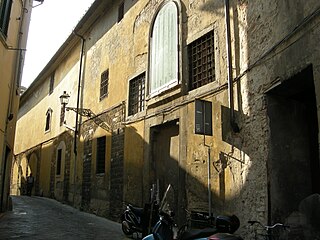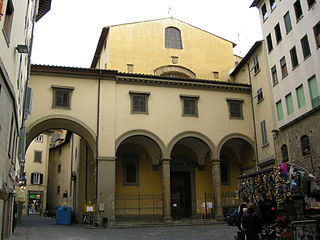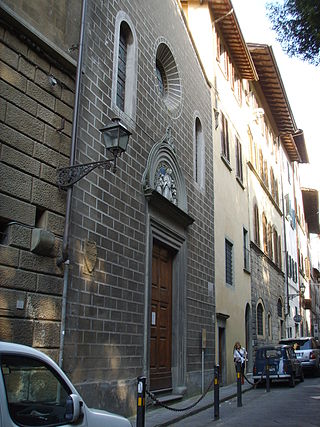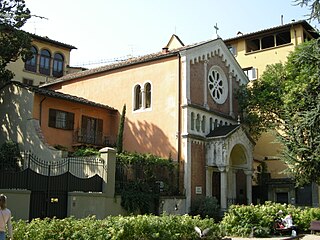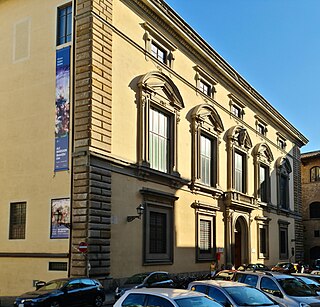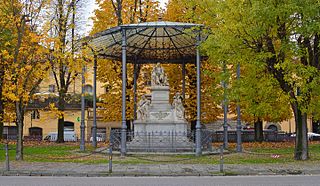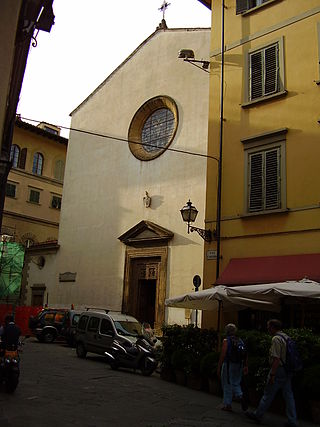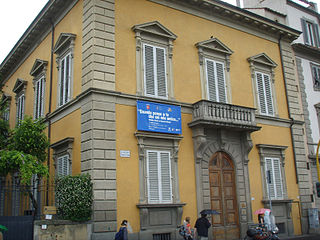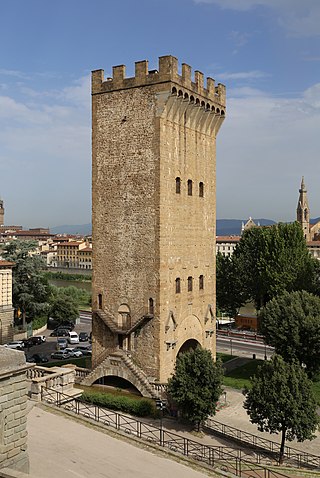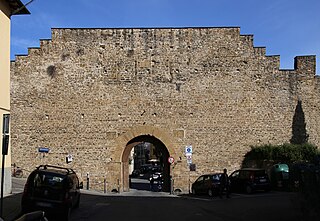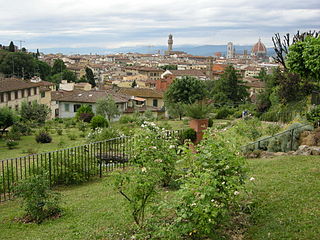Self-guided Sightseeing Tour #7 in Florence, Italy
Legend
Guided Free Walking Tours
Book free guided walking tours in Florence.
Guided Sightseeing Tours
Book guided sightseeing tours and activities in Florence.
Tour Facts
9.5 km
334 m
Experience Florence in Italy in a whole new way with our free self-guided sightseeing tour. This site not only offers you practical information and insider tips, but also a rich variety of activities and sights you shouldn't miss. Whether you love art and culture, want to explore historical sites or simply want to experience the vibrant atmosphere of a lively city - you'll find everything you need for your personal adventure here.
Activities in FlorenceIndividual Sights in FlorenceSight 1: Giardino Torrigiani
The Torrigiani garden is located in Florence between Via de' Serragli, Via del Campuccio and the stretch of wall that runs along Viale Francesco Petrarca. It is a large park with a palace called Casino Torrigiani al Campuccio.
Sight 2: Chiesa di Santa Elisabetta delle Convertite
Santa Elisabetta delle Convertite is a formerly Roman Catholic church on Via de' Serragli in the Oltrarno neighborhood of Florence region of Tuscany, Italy. Since 2015, the church has functioned as a Georgian Orthodox church. The former adjacent convent has multiple uses, including in 2016 as the Istituti Pio X Artigianelli.
Sight 3: Teatro Goldoni
The Teatro Goldoni of Florence was first opened in 1817 at the site of the former Annalena monastery in Oltrarno, region of Tuscany, Italy. The theater, dedicated to the playwright Carlo Goldoni, has a main facade on the narrow Via Santa Maria #15, it is near the corner with Via de Caldaie.
Sight 4: Giardino dell'Ardiglione
The Nidiaci-Ardiglione garden is a garden and space for children in the city of Florence, located in the district of San Frediano, in the Florentine Oltrarno, behind the basilica of Santa Maria del Carmine. The historic entrance to the complex was from Via della Chiesa, but the garden is accessible only from a gate in Via d'Ardiglione.
Sight 5: Basilica di Santa Maria del Santo Spirito
The Basilica di Santo Spirito is a church in Florence, Italy. Usually referred to simply as Santo Spirito, it is located in the Oltrarno quarter, facing the square with the same name. The interior of the building – internal length 97 m (318 ft) – is one of the preeminent examples of Renaissance architecture.
Sight 6: Galleria Palatina
The Palazzo Pitti, in English sometimes called the Pitti Palace, is a vast, mainly Renaissance, palace in Florence, Italy. It is situated on the south side of the River Arno, a short distance from the Ponte Vecchio. The core of the present palazzo dates from 1458 and was originally the town residence of Luca Pitti, an ambitious Florentine banker.
Sight 7: Artichoke Fountain
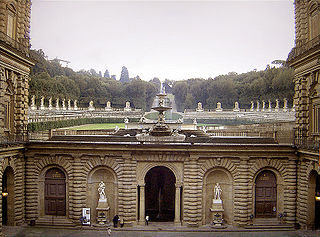
The Artichoke Fountain is located in Palazzo Pitti in Florence.
Sight 8: Fontana del Bacchino
The fountain of the Bacchus, or fountain of the Dwarf Morgante, is located in the Boboli Gardens in Florence, in the area north-east of Palazzo Pitti on the wall where the Vasari Corridor passes a short distance from the exit of the garden on Piazza Pitti. The sculpture is made of white marble and is 116 cm high.
Sight 9: Costume Gallery Florence
The Museum of Fashion and Costume is one of the museums housed in Palazzo Pitti in Florence, in particular in the Palazzina della Meridiana, a pavilion south of the palace which can also be accessed from the Boboli Gardens.
Sight 10: Colonna di San Felice
In Florence there are some columns erected over the centuries as urban decoration and testimony of various vicissitudes. There are not many as in Rome, for example, but each one is linked to a particular event, real or legendary, in the city's history.
Sight 11: Casa Guidi
Casa Guidi is a writer's house museum in the 15th-century patrician house in Piazza San Felice, 8, near the south end of the Pitti Palace in Florence, Italy. The piano nobile apartment was inhabited by Robert and Elizabeth Barrett Browning between 1847 and Mrs Browning's death in 1861. Their only child, Robert Barrett Browning, was born there in 1849.
Sight 12: Chiesa di San Felice in Piazza
The Chiesa di San Felice is a Roman Catholic church in Florence, region of Tuscany, Italy. It is located on the south bank of the River Arno, just west of the Pitti Palace. It is predominantly Gothic, but has a Renaissance façade by Michelozzo, added in 1457. Over the high altar is a large Crucifix attributed to Giotto or his school.
Sight 13: La Specola
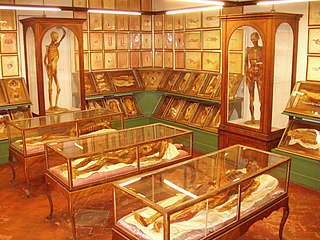
The Museum of Zoology and Natural History, best known as La Specola, is an eclectic natural history museum in Florence, central Italy, located next to the Pitti Palace. The name Specola means observatory, a reference to the astronomical observatory founded there in 1790. It now forms part of the Museo di Storia Naturale di Firenze. This museum is part of what are now six different collections at four different sites for the Museo di Storia Naturale di Firenze.
Sight 14: Oratorio di San Sebastiano de' Bini
The oratory of San Sebastiano de' Bini, also known as "spedalizzo" or "spedaluzzo di Santo Spirito", is a Catholic place of worship located in Via Romana in Florence.
Sight 15: Chiesa di San Pier Gattolino
The church of San Pier Gattolino is a Catholic place of worship located in Florence on Via Romana.
Sight 16: Chiesa di San Giovanni Battista della Calza
The church of San Giovanni Battista della Calza is a Catholic place of worship that is part of the Calza complex, founded in 1362 as the hospital of San Giovanni Battista, and is located in Piazza della Calza 6, opposite Porta Romana, in the Oltrarno district in the historic center of Florence.
Sight 17: Porta Romana
The Porta Romana, once known as the Porta San Pier Gattolino was the southernmost gate in the 13th-century walls of the Oltrarno section of Florence, region of Tuscany, Italy. It stands at the confluence of a number of roads: accessed from north by Via Romana, Via de' Serragli, and Viale Francesco Petrarca. In addition, a central road along the Boboli Gardens begins near the gate, and allowed the inhabitants of the Pitti Palace to exit and enter Florence with minimal travel on city streets. Beyond the gates are the Via del Poggio Imperiale and Via Senese. The latter led to Siena and points south such as Rome, hence the name. When the majority of the defensive walls of Florence were razed in the 19th century, only a few, and sometimes partial gate structures were left standing including San Gallo Gate, Tower of San Niccolò, and this gate with a snippet of merlonated wall.
Sight 18: Fontana dell'Oceano
The Fountain of the Ocean, the work of Giambologna, is located in the Boboli Gardens in Florence.
Sight 19: Pegaso
The flag of Tuscany is the official flag of the region of Tuscany, Italy. The flag depicts a silver Pegasus rampant on a white field between two horizontal red bands. The flag first appeared as a gonfalon on 20 May 1975 along with accompanying text Regione Toscana above the Pegasus. It was officially adopted as the flag of Tuscany on 3 February 1995.
Sight 20: Anfiteatro
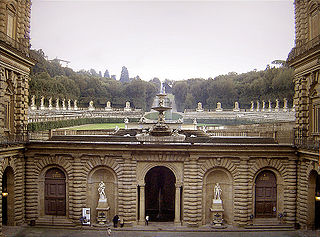
The Boboli Amphitheater is one of the main architectures of the Florentine Boboli Gardens in the Pitti Palace, which embellishes the main axis, centered on the rear façade of the palace. Used as a place for summer performances, it is the oldest court theater in Florence that has come down to us, after the loss of the Dogana theater and the Medici Theater.
Sight 21: Obelisco
The Boboli obelisk, previously called the Obelisco Mediceo, is an ancient Egyptian granite obelisk, which was moved in the 18th century from Rome to Florence, where it was erected in the Boboli Gardens.
Sight 22: Giardino del Cavaliere
The Boboli Gardens is a historical park of the city of Florence that was opened to the public in 1766. Originally designed for the Medici, it represents one of the first and most important examples of the Italian garden, which later served as inspiration for many European courts. Statues of various styles and periods, ancient and Renaissance, dot the garden. It also has large fountains and artificial caves, notably a grotto built by the artist, architect, and sculptor Bernardo Buontalenti between 1536 and 1608.
Sight 23: Porcelain Museum
The Porcelain Museum is located in the Casino del Cavaliere, one of the highest points of the Boboli Gardens at the Pitti Palace in Florence, Italy.
Sight 24: Forte di Belvedere
The Forte di Belvedere or Fortezza di Santa Maria in San Giorgio del Belvedere is a fortification in Florence, Italy.
Sight 25: Giardino Bardini
The Giardino Bardini is an Italian Renaissance garden of the Villa Bardini in the hilly part of Oltrarno, offering views of Florence, Italy.
Sight 26: Villa Bardini
Villa Bardini, formerly Villa Manadora, is located on the San Giorgio 2 coast in Florence. Today it is an exhibition center that hosts temporary exhibitions and the Annigoni Museum; until 2017 it also housed the Capucci Museum. The park of the villa is the scenic Bardini garden, which can now be visited separately with the same ticket as the Boboli Gardens. In addition, the "Bardinicontemporanea" space offers contemporary art exhibitions with free admission.
Sight 27: Giardino Giuliani
The Giuliani garden is a private urban space in the historic center of Florence, with entrance on Costa Scarpuccia 7.
Sight 28: Chiesa di San Giorgio alla Costa
The church of San Giorgio alla Costa, called in earlier times also dei Santi Giorgio e Massimiliano dello Spirito Santo is a small historical church in the Oltrarno district of the centre of Florence, situated on the steep slope of via Costa San Giorgio which runs uphill from Ponte Vecchio to Forte di Belvedere.
Sight 29: Chiesa dei Santi Girolamo e Francesco alla Costa
The church of Saints Jerome and Francis alla Costa is a Catholic place of worship located along the steep San Giorgio coast, a street that climbs to the Belvedere fort from the Ponte Vecchio in the center of Florence.
Wikipedia: Chiesa dei Santi Girolamo e Francesco alla Costa (IT)
Sight 30: Chiesa di Santa Felicita
Santa Felicita is a Roman Catholic church in Florence, region of Tuscany, Italy, probably the oldest in the city after San Lorenzo. In the 2nd century, Syrian Greek merchants settled in the area south of the Arno and are thought to have brought Christianity to the region. The first church on the site was probably built in the late 4th century or early 5th century and was dedicated to Saint Felicity of Rome. A new church was built in the 11th century and the current church largely dates from 1736–1739, under design by Ferdinando Ruggieri, who turned it into a one nave edifice. The monastery was suppressed under the Napoleonic occupation of 1808–1810.
Sight 31: Chiesa di Santa Lucia dei Magnoli
Santa Lucia or Santa Lucia dei Magnoli is a Roman Catholic church located on via de'Bardi in Oltrarno district of Florence, region of Tuscany, Italy.
Sight 32: Chiesa evangelica luterana
The Evangelical Lutheran Church is a religious building in the historic center of Florence, located on Lungarno Torrigiani, at the southwest end of the Martin Luther gardens.
Sight 33: Museo Stefano Bardini
The Bardini Museum is a cultural institution in Florence, located in the Oltrarno district, with entrance in Via de' Renai 37 and exit in Piazza de' Mozzi 1.
Sight 34: Piazza Nicola Demidoff
Piazza Nicola Demidoff is a widening of the historic center of Florence, in the Oltrarno, overlooking the Lungarno Serristori and also from Via dei Renai. It is dedicated to the Russian ambassador Nicola Demidoff.
Sight 35: Chiesa di San Niccolò Oltrarno
Get Ticket*San Niccolò Oltrarno is a Roman Catholic church located on Via San Niccolò in the district of the same name in Florence, region of Tuscany, Italy. The narrow district of Niccolò in Oltrarno is hemmed between the hills around San Miniato and the river.
Sight 36: Museo Casa Rodolfo Siviero
The Rodolfo Siviero House Museum or more commonly Casa Siviero is located on the Lungarno Serristori, in the Oltrarno district of Florence.
Sight 37: Torre San Niccolò
The Tower of San Niccolò, once part of a gate or porta in the former defensive walls of Florence, is now located, isolated in Piazza Giuseppe Poggi, in the district of Oltrarno, Florence, region of Tuscany, Italy. The portal was first erected in 1324 and stands 115 feet tall, which can be accessed through 160 steps.
Sight 38: Porta San Miniato
Get Ticket*The Porta San Miniato is a city gate part of the circle of walls of Florence, and is located in Oltrarno, in the area of San Niccolò, between Via San Miniato and Via Monte alle Croci. The name derives from the fact that the road to the church of San Miniato al Monte starts from here.
Sight 39: Giardino delle Rose
Get Ticket*Giardino delle rose is a garden park in the Oltrarno district of Florence, in Tuscany, Italy. It is located below the Piazzale Michelangelo and offers a commanding view of the city.
Share
How likely are you to recommend us?
Disclaimer Please be aware of your surroundings and do not enter private property. We are not liable for any damages that occur during the tours.
GPX-Download For navigation apps and GPS devices you can download the tour as a GPX file.
